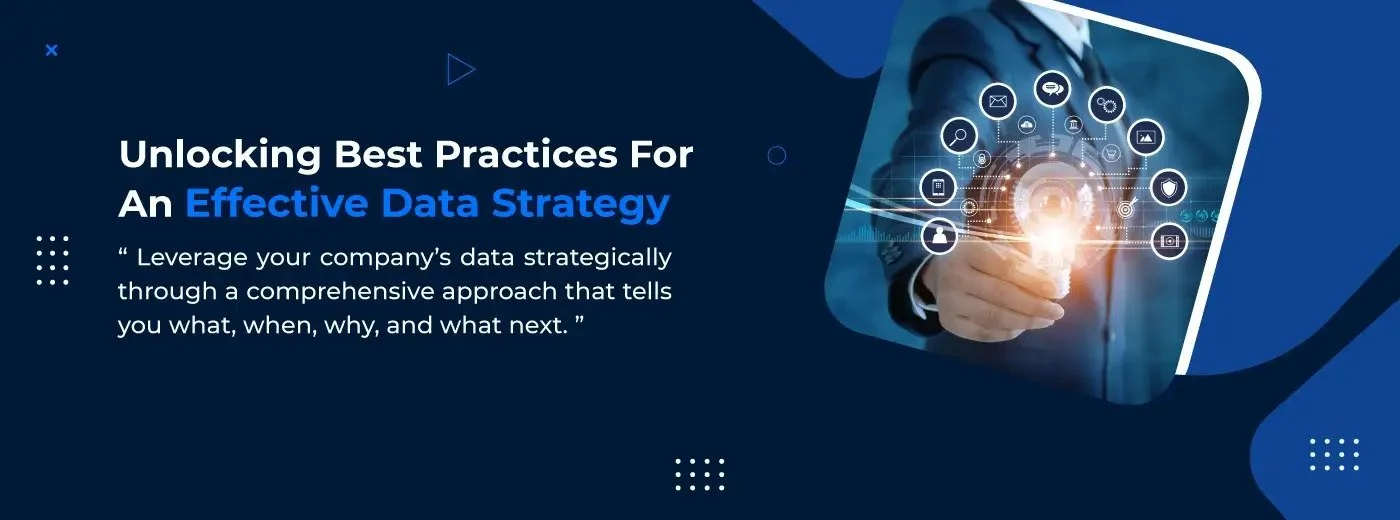Abraham Lincoln was quoted as saying “Give me six hours to chop down a tree and I will spend the first four sharpening the ax.” Likewise, organizations should bear this quote (and process) in mind when defining their strategies. Let's get started.
Organizations worldwide rely on data to make some of the most significant business decisions, and when their data isn't easily accessible or accurate, poor decisions are often made, which can affect the company in catastrophic ways.
For instance, a year ago, data issues became apparent at Hawaiian airlines when in a single week, they charged customers in dollars rather than frequent flier miles and mistakenly charged one customer $674,000. In contrast, other customers were charged zero miles for their trip. To make matters worse, the organization canceled the tickets when trying to fix the faux pas, further upsetting customers. Such data issues can create an image of unprofessionalism and taint a loyal customer relationship.
Gartner recently estimated that 40 percent of a company's data lacks accuracy and does not communicate the complete picture. What can your enterprise do to prevent these issues?
Data becomes the key to competitive advantage as the world becomes more innovative. A company's capability to compete will increasingly be driven by how well it can leverage and implement new technologies and data. As per the International Institute for Analytics, businesses utilizing data will witness $430 billion in productivity advantages over competitors who are not utilizing data.
So, it's transparent that data is now a critical business asset, and it's revolutionizing the way companies operate across most sectors and industries. In effect, regardless of size, every business now required to be a data business. And if every enterprise is a data business, therefore, requires a robust data analytics strategy.
It All Starts with a Effective Data Strategy
Having a transparent data strategy is vital when you consider the sheer volume of data available these days. We see too many businesses get so caught up in the big data buzz that they collect as much data as possible without considering what they want to explore with all that data. While others are so overwhelmed by alternates that they bury their heads in the sand. Neither represents an intelligent way to run a business.
Instead of getting started with the data itself, every enterprise should start with an analytics strategy. At present, it doesn't matter what data you're already collecting, what data is out there, what data your competitors are collating, or what new forms of data are becoming available at their disposal. Neither does it matter whether your enterprise has mountains of analysis-ready data at its side or next to none. A robust data strategy is not about what data is potentially or readily available – it's about what your enterprise wants to achieve and how data can assist you to get there.
Therefore, if organizations want to avoid drowning in data, they need to develop an intelligent strategy that focuses on the data they require to achieve their goals. To be correctly useful in a business sense, data must address specific business requirements, generate real value, and help the organization reach its strategic goals. This means organizations need to define the key challenges and business-critical questions that need answering and then collate and analyze the data to assist them to address the issues.
In the current scenario, we see a lot of organizations with data strategies nestled within disparate areas of the business, such as sales and marketing. That's not enough. Every business needs a company-wide data plan. Unfortunately, there is also a widespread perception among business executives that data and analytics are purely IT matters. And as with all IT matters, they don't need to understand how it works.
They need to know what it does – drive growth – and throw money at it. So, data strategies that are driven by the IT team tend to focus on data storage, integrity, and ownership rather than the business's long-term strategic goals and how data can help reach those goals. That's why the leadership team should own the data strategy.
It is also significant to remember that no one type of data is inherently better than any other. Utilizing data strategically is about discovering the best data for your company, which may be very different from what's best for another organization. With so much data available at your disposal, the trick is to find the imposed, specific pieces of data that will best assist your organization.
Leverage your company’s data strategically through a comprehensive approach that tells you what, when, why, and what next.
7 Best Practices in Successful Data Strategy
As digital transformation gains momentum universally, the conversation around data, its management, and strategies to guide its utilization is also evolving. By the end of 2019, digital transformation spending is expected to cross a staggering USD 1.7 trillion. A big part of this will be invested in data technologies, such as Big Data, Data Lake infrastructures, and Advanced Analytics. A study by Oxford Economics revealed that 94% of business leaders are eager to spend more on data-related tools to accelerate the transformation journey.
So, what are the considerations enterprises must look at before leaping onto the data bandwagon? With so much at stake and global data volumes steadily rising, organizations need a clearly outlined data strategy to unlock long-term benefits.
Look beyond a one-size-fits-all model:
Depending on the size of a company and the nature of the business, data management strategies can vary crucially. For example, sectors like healthcare and BFSI will have to factor in firm compliance, while retail must consistently update data assets in line with switching customer sentiment. These crucial factors should be identified before commencing strategy planning.
Identify external and internal stakeholders:
Data can come from various origination touchpoints— internal such as performance reports and audits, and external, like market research and consumer feedback. These trails must be transparently outlined, with ownership allocated for each data type. This will make sure that the strategy finds its desired outcomes and that datasets are always accurate, cleansed, and complete.
Align IT understanding with business needs:
Expectedly, IT will be more concerned about structural, technical, and internal issues than a dataset's real-world effects. By making data strategy planning the solitary responsibility of IT teams, companies risk losing out on opportunities by giving data to sit idle within the organization. For that reason, Business and IT users must closely collaborate — from the grassroots level to the C-suite.
Create a separate mission statement:
Demarcating the purpose of the data strategy can go a long way in ensuring positive results. In the present scenario, every enterprise has a sizable repository housed within its systems, and a statement mentioning the objectives behind its usage is necessary. This will ensure that the strategy addresses all the stakeholders concerned, IT and business teams are on the same page, the organization's needs are being met, and there is no excessive spending.
Assess existing capabilities:
Evaluating where the organization currently stands on the data management maturity curve will help understand the distance left to cover. The mission statement will provide clear milestones, and depending on the maturity status, low-hanging fruits can be targeted. After that, any infrastructural gaps and areas of improvement can be bridged through intelligent investments.
Ramp up Big Data capacities:
Big data offers the significant benefits of unraveling insights even from unstructured datasets. That means that companies don't have to spend on reformatting, converting, and structuring info coming in from diverse areas. In this regard, capacities will involve Data Lakes where Big Data can be stored and specialized analytics strategies to churn out insights.
Define governance and management duties:
While data management strategy is typically within the IT realm, data governance strategy must involve intervention from the C-suite. Management refers to the complete lifecycle of a data asset from its creation to retirement. On the other hand, governance is far more holistic, linking data to use cases, determining application/retirement, and ensuring privacy and compliance.
Therefore, the technologies around master data management are continually evolving; business leaders face a difficult choice in their strategy, selection, and implementation. To cut through the clutter in this strong environment and ensure effective decision-making, it is vital to have a well-thought-out data strategy framework covering every node of the organizational ecosystem.
Conclusion
As the world develops technologically, companies need to adopt new data strategies to protect and use their data. Thus, a proper data strategy roadmap ensures efficient use of data. It will achieve the organizational objective by creating effective methods and practices to manage shared information across the enterprise.
We at Polestar Solutions help organizations to make well-informed business decisions, improve internal operations and customer experiences, and drastically reduce costs to unlock the valuable information that the enterprise holds. Get in touch with our data analytics consultant to explore our offerings today!



